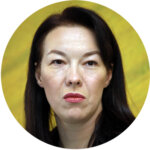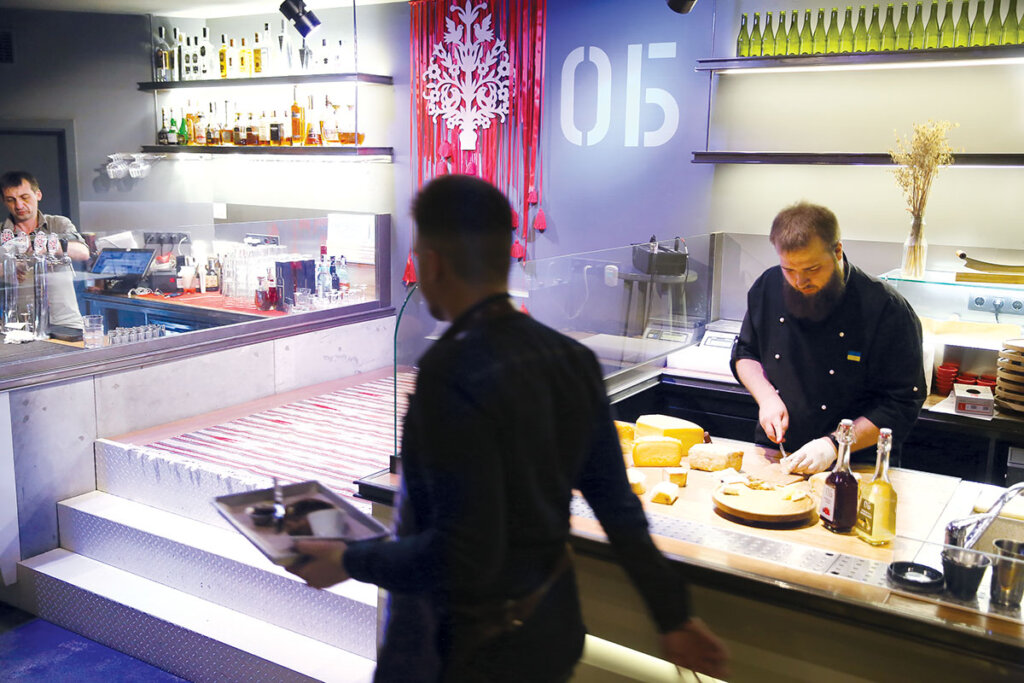Key message: Ukraine’s food industry, while having great potential, lacks innovative technologies and government strategy to maximize its advantages.

John Wiles
Corteva Agriscience, the agriculture division of DowDuPont
“Food and the water are the most basic need of a humankind. But the biggest megatrend, that we need to look at is the population growth – up to 10 billion people by 2050. It’s like adding India and China again to the world population”
“The Western world is wasting equivalent of the total production of sub-Saharan Africa annually. That is not a good approach”

Olesya Olenytska
director of Government Relations and Public Affairs at METRO Cash & Carry Ukraine
“In Ukraine, the trend of healthy consumption is increasing – for example, foods with lower sugar content, no gluten or lactose. Some can buy good fish and go to restaurants, but some, unfortunately, and we have millions – those people who barely make both ends meet.”

Dmytro Borysov
cook, an owner and the brand-chef of a self-titled restaurant chain
“In restaurants people don’t eat carrots. Our customers want salmon, steaks or oysters. We even have to buy pork in Poland. So, we need to develop the market of products in Ukraine, because the country has a great potential. “Chicken Kyiv cutlet is one of the most famous cuisine in the world and a very serious export dish, Ukrainian vareniky are as good as Chinese dumplings or Italian ravioli, galushki are the same as Italian Gnocchi. There are no centralized companies, neither public nor private, that can deal with (food) waste disposal in Ukraine.”
Just with the fertility of its famous black earth, Ukraine could easily help meet the world’s ever-growing demand for good-quality and nutritious food, fueled by rapid population growth.
But Ukraine could also super-charge its agricultural potential by using innovations in every step of the food production process, from planting to recycling waste, speakers at this year’s Kyiv Post Tiger Conference said during the outbreak “Food Story” panel at the InterContinental Kyiv hotel on Dec. 11.
These were among the hot topics discussed during the panel, which was moderated by John Wiles, technical portfolio strategy leader in the Integrated Field Sciences division at the research and development organization for Corteva Agriscience at Corteva, the agriscience division of U.S. corporation DowDuPont.
“Food and the water are the most basic need of a humankind. But the biggest megatrend, that we need to look at is the population growth — up to 10 billion people by 2050. It’s like adding India and China again to the world population,” said Wiles.
Ukraine’s consumption trends, tracing the origin of food, as well as waste management and export of cuisine, were discussed by the two other panelists — Olesya Olenytska, Director of government telations and public affairs at METRO Cash & Carry Ukraine, and Dmytro Borysov, chef and owner of the Borysov restaurant chain.
Consumption trends
Olenytska noted several trends seen in the past few years. One of the most noticeable is the increasing popularity of health-conscious consumption, consisting of foods with lower sugar content, no gluten or lactose.
At the same time, in the big cities Ukrainians have started to buy more foods that are high in calories.
“Compared to last year, Ukrainians are buying more meat, dairy products, and eggs in the big cities, so the trend is moving towards more calorific foods. They’ve spent 19 percent more (on them) this year — Hr1,890 ($72) per person last year, and this year is Hr 2,243 ($80),” said Olenytska.
The most negative trend for Ukraine, according to Wiles, is the expensiveness of the food, since low Ukrainian incomes mean not many can afford expensive foods.
“Food prices are high, and people spend a high proportion of their salary (on food) in Ukraine,” Wiles said.
Borysov, who owns 22 restaurants, said that nearly 80 percent of Ukrainians buy and cook food for themselves, while in Western countries the situation is the opposite.
For that reason, restaurant and consumer food spending are significantly different, he said. Ukrainian suppliers, oriented to the mass market, can’t meet higher-end demand.
“In restaurants people don’t eat carrots. Our customers want salmon, steaks or oysters. We even have to buy pork in Poland. So, we need to develop the market of products in Ukraine, because the country has a great potential,” said Borysov.
On the other hand, the war with Russia, that started four years ago, brought new challenges that country has to deal with.
“Some can buy good fish and go to restaurants, but some, unfortunately, and we have millions — those people who barely make both ends meet,” said Olenytska.
Food waste problem
Thirty percent of the world’s food is just wasted, according to the Food and Agriculture Organization (FAO), specialized agency of the United Nations.
“The Western world is wasting the equivalent of the total production of sub-Saharan Africa annually. That is not a good approach,” said Wiles.
When it comes to Ukraine, every 10th person needs aid, including food, because of Russia’s war, according to Olenytska. At the same time, no restaurant in Kyiv sorts its garbage, each of them producing 200 kilograms of organic waste daily, according to Olena Kazanska, who works at Stock-Factory, a Ukrainian platform on which refurbished or outdated goods are sold. For example, the food waste could be used for biogas, Kazanska suggested.
But the problem is exacerbated by the government not providing the necessary infrastructure for recycling.
“There are no centralized companies, neither public nor private, that can deal with (food) waste disposal in Ukraine. For example, our restaurants make around a ton a day of cabbage waste alone,” said Borysov.

Chefs work in the kitchen of Ostannia Barykada, situated in downtown Kyiv on Maidan Nezalezhnosti Square, one of the five restaurants of Ukrainian star restaurateur Dmytro Borysov. (Oleg Petrasiuk)
Today, global innovations in the food industry allow consumers to know who made the foods they eat, as well as when and where. But in Ukraine such technology is still poorly developed, especially when it relates to smaller farmers.
“We still do not have opportunities, in a country that has 60 percent of Europe’s black soil, to build direct relationships with farmers,” said Borysov.
On the other hand, METRO Cash & Carry Ukraine has taken a few steps towards such product tracablity, as it is gradually implementing a product origin tracing system into its regular operations. Olenytska says that the Ukrainian market is ready for such an innovation, due to the increasing trend for healthy eating.
“Buying a Norwegian salmon traceability system helps to track from which areas, on which vessel and by whom this fish was caught and where it was caught. The trend is also coming to Ukraine thanks to a special program and the use of QR codes, which can easily be used by everybody,” said Olena Salatska, quality director at METRO Cash & Carry Ukraine.
Export of cuisine
Italian pizza, French croissants, Japanese sushi — every country has its unique feature in terms of food. Ukraine is not an exception too.
In fact, Borysov sees a really great potential for exporting Ukrainian dishes.
“Chicken Kyiv cutlet is one of the most famous cuisines in the world and a very serious export dish, Ukrainian varenyky are as good as Chinese dumplings or Italian ravioli, galushki are the same as Italian Gnocchi,” he said.
“Cold borsch is already very popular in Japan and is sold in vending machines,” Borysov added.
However, Ukraine needs to take active steps to showcase the huge variety of dishes in its cuisine, which with the right approach, could be famous throughout the world, the restaurateur concluded.



